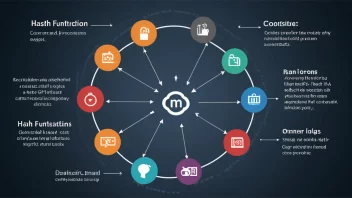In the rapidly evolving landscape of technology, digital forensics plays a pivotal role in investigating crimes, securing data, and ensuring justice. However, with the emergence of new technologies, forensic experts face unique challenges that impact their ability to analyze and interpret digital evidence effectively.
One of the primary challenges in digital forensics is the sheer volume of data generated by modern devices. With the proliferation of smartphones, tablets, and IoT devices, investigators must sift through massive amounts of information to find relevant evidence. This data can be unstructured, making it difficult to identify essential elements quickly. Forensic tools must adapt to handle this complexity, ensuring that they can manage and analyze large datasets efficiently.
Another significant issue is the encryption of data. As users become more aware of privacy concerns, many opt for encryption solutions to protect their information. While encryption is crucial for safeguarding personal data, it poses a challenge for forensic professionals attempting to access this information during investigations. The constant development of new encryption methods and technologies requires digital forensic experts to stay updated and proficient in decryption techniques.
Moreover, the rise of cloud computing adds another layer of complexity. Data stored in the cloud may be located across various jurisdictions, complicating legal aspects and access rights. Investigators must navigate international laws, data protection regulations, and service provider policies to obtain the information necessary for a case. Understanding how to work with cloud service providers and implement appropriate legal channels is essential for effective digital forensic analysis.
In addition, the rapid advancement of technologies such as artificial intelligence (AI) and machine learning (ML) creates both opportunities and challenges for digital forensics. While these technologies can enhance data analysis and pattern recognition, they can also be exploited by criminals to cover their tracks or create false evidence. Digital forensic professionals must develop skills in these areas to utilize them effectively while also understanding their implications for investigations.
Case studies illustrate these challenges vividly. For instance, in a recent cybercrime investigation, forensic experts struggled to retrieve critical evidence from a suspect's encrypted smartphone. The case highlighted the need for advanced decryption methods and the importance of legal frameworks governing digital evidence. Similarly, an investigation involving cloud storage revealed discrepancies in data access due to jurisdictional issues, leading to delays in the case.
In conclusion, the field of digital forensics is continually evolving, presenting both challenges and opportunities in analyzing emerging technologies. Forensic experts must adapt to the growing volume and complexity of digital data, address the implications of encryption, navigate cloud computing regulations, and incorporate advancements in AI and ML. Staying informed and skilled in these areas is vital for successfully conducting investigations and ensuring justice in the digital age.






